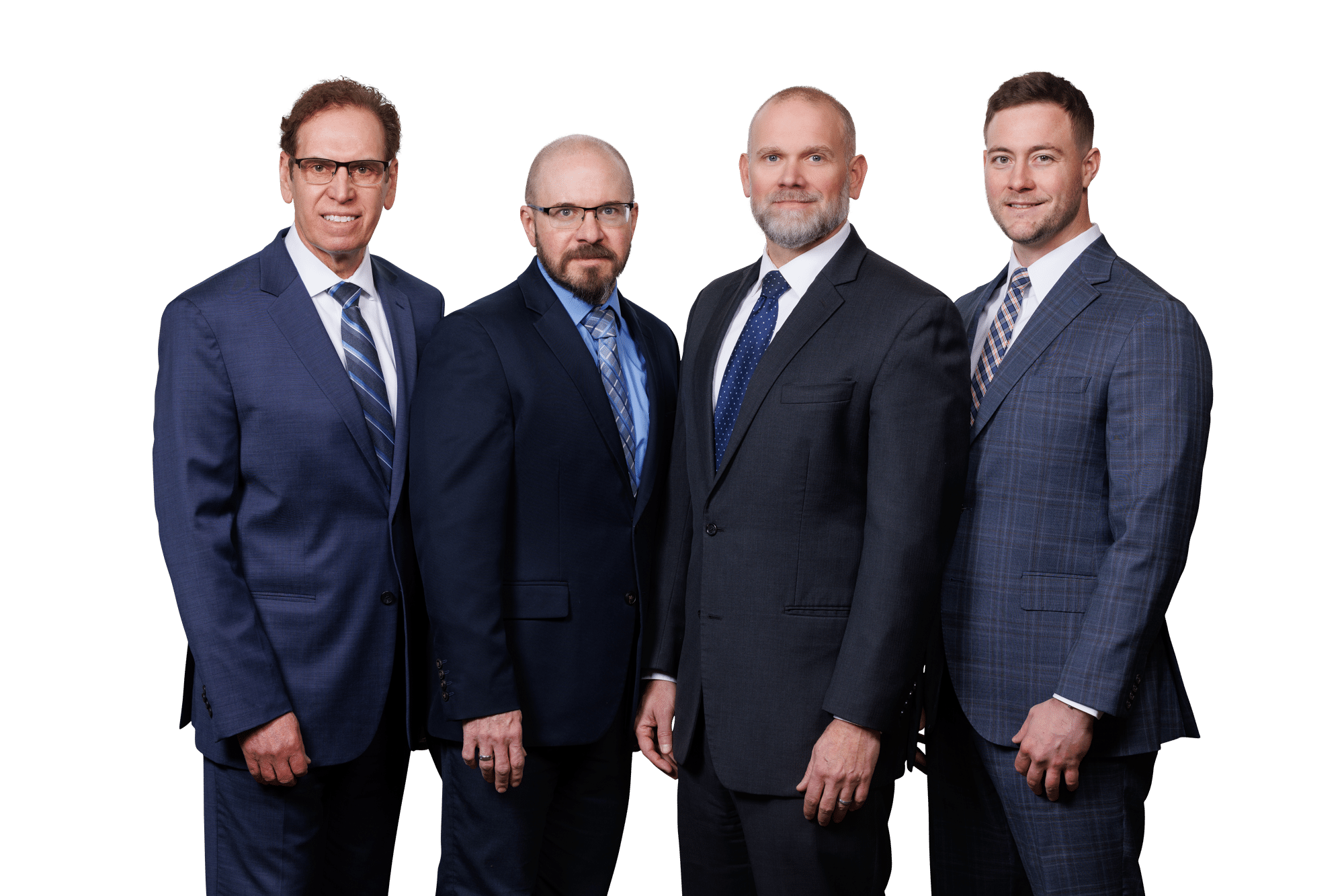A hit-and-run happens when a driver causes an accident and flees the area without stopping. A hit and run can cause property damage, injury, or even death.
Regardless of the accident’s severity, anyone who is the victim of a hit-and-run accident feels violated emotionally, has property damage, may be physically harmed, and deserves to be compensated for the harms and losses incurred. Fortunately, in Colorado, uninsured/underinsured motor vehicle coverage (UM/UIM) will pay for your harms and losses if you have purchased such coverage.
Does Insurance Cover Colorado Hit-and-Run Accidents?
Dealing with the aftermath of a hit-and-run accident in Colorado can feel overwhelming. This is especially true when trying to sort out the complexities of insurance coverage. Understanding what your insurance policy does and does not cover in these situations is vital. Below, we have identified and discussed the different types of insurance coverage that may come into play after a hit-and-run accident in Colorado.
Uninsured and Underinsured (UM/UIM) Motorist Coverage for Hit and Runs
Colorado law mandates that all drivers have liability insurance, but not all follow this rule. If you are involved in a hit-and-run or an accident with a driver without insurance, Uninsured and Underinsured (UM/UIM) Motorist Coverage can be a lifesaver.
UM coverage protects you financially when the at-fault driver is uninsured or flees the scene. UIM coverage provides coverage when the at-fault driver is identified but has inadequate insurance to cover all of your harms and losses. In Colorado, this coverage can be waived if done so in writing. However, we highly recommend that you do not waive this coverage and obtain UM/UIM coverage. This coverage assists in covering property, medical expenses, and financial harms and damages, and is needed if the responsible driver is not identified or has inadequate insurance.
Discussing UM/UIM coverage with your insurance agent is crucial. Including this coverage in your policy ensures you are not left bearing the financial burden of a hit-and-run. Investing in UM/UIM coverage protects you against potential losses caused by uninsured or inadequately insured motorists. This is the reason this UM/UIM coverage is mandatory in Colorado, unless waived in writing. Since it is relatively inexpensive, it is certainly worthwhile.
MedPay Coverage
Medical Payments Coverage, or MedPay, is also a relatively inexpensive and critical aspect of your auto insurance policy. UM/UIM only comes into play if you are not at fault for causing the collision. However, MedPay, in Colorado, helps cover medical bills for you and your passengers, regardless of who caused the accident. Like Uninsured and Underinsured Motorist coverage, MedPay is mandatory unless waived in writing. The minimum coverage is in the amount of $5,000 for each occupant in the car. There is no copay requirement up to the policy limit, and unlike most health insurance, you do not have to repay the MedPay coverage from the settlement funds. This repayment is called a subrogation requirement. MedPay does not have subrogation, so it is uniquely valuable to you. Deleting this coverage from your motor vehicle insurance is not a good idea.
In the event of a hit-and-run, where identifying the at-fault driver can be challenging, MedPay is especially valuable. It can assist with various costs, including the emergency department, ambulance fees, medical treatment, and funeral expenses. This coverage offers crucial financial support during difficult times, ensuring you and your passengers receive necessary medical care without delay.
Including MedPay in your policy provides peace of mind, knowing that your medical costs (up to the limit you choose) will be paid regardless of fault. Discussing this coverage with your insurance agent ensures you have comprehensive protection, making it easier to handle unexpected expenses following an accident.
Using Health Insurance for Hit-and-Run Accidents
While auto insurance provides specific coverage for hit-and-run accidents, your health insurance also plays an important role. If you have health insurance, it will likely cover medical expenses from a hit-and-run accident. Your health insurance normally will cover healthcare costs that exceed your MedPay coverage amounts. However, under most circumstances, your health insurance will seek at least partial reimbursement from the proceeds of your settlement or judgment. This “subrogation” obligation can be reduced or potentially eliminated when you are represented by a competent attorney.
Coordinating benefits between your auto and health insurance policies is essential. This ensures you maximize your coverage and minimize gaps in financial protection. By understanding both policies, you can better manage your medical expenses and receive the care you need after a hit-and-run incident.
Steps to Take if You Are Involved in a Hit-and-Run Accident
Knowing the proper steps immediately following a hit and run is paramount for protecting your rights and obtaining reimbursement for your harms and losses.
Immediate Actions to Take if You Are a Victim or the Accused
When you are the victim of a hit-and-run, taking immediate and appropriate action is crucial.
- Ensure Safety and Seek Medical Attention: Your highest priority is everyone’s safety. Move your vehicle to a safe location to prevent further accidents. Check yourself and any passengers for injuries. If someone is hurt, call 911 right away to get medical help. Even if injuries seem minor, getting medically evaluated is wise in order to identify the collision-related injuries, which may worsen with time. If you have MedPay coverage, it will pay for the ambulance ride to the hospital, emergency department treatment, and medical treatment up to the limits of your MedPay coverage.
- Gather Information: Gather as much information about the fleeing vehicle as possible. Note the make, model, color, and license plate number. Pay attention to any distinctive features or damage to the fleeing car, as these details can be crucial for identifying the vehicle. Also, record the time and location of the incident.
- Document the Scene: Take clear photographs or videos of the accident scene. Capture all vehicle damage, injuries sustained, and relevant environmental factors such as skid marks, road conditions, and traffic signals. This information will be valuable for your insurance claim and any legal action. When taking photographs, take them from a distance and then nearer to the object.
- Locate Witnesses: Look for potential witnesses who may have seen the accident. Obtain their information and ask them for a brief account of what they observed. Witness statements can provide additional perspectives and support your claim for reimbursement.
- Contact Your Insurance Company: Report the hit-and-run to your insurance company immediately. Provide your insurance company with all the information you have collected, including details from the police report. However, before speaking with the at-fault driver’s insurance representative, you should contact a qualified lawyer. You do not want to be misquoted later, should the liability be contested.
- Follow the treatment recommendations of the emergency room physicians.
- If you have suffered significant bodily injury, you should contact a qualified attorney for peace of mind and assistance.
Taking these steps protects your rights and ensures you have the necessary evidence to support your personal injury case.
Statute of Limitations on Hit-and-Run Accidents in Colorado
In Colorado, the statute of limitations sets the time limits for prosecuting individuals who caused the collision and fled the scene. Section 16-5-401, C.R.S., provides the statute of limitations for the criminal prosecution of a hit and run:
- Class 3 Felony (Hit-and-Run Resulting in Death): Prosecutors have five years from the date of the accident to file charges.
- Class 4 Felony (Hit-and-Run Resulting in Serious Bodily Injury): The statute of limitations is three years from the date of the accident.
- Traffic Misdemeanors (Property Damage or Non-Serious Injuries): Charges must be filed within one year of the incident.
Understanding these time limits is important for victims. If you are involved in a hit-and-run accident, you should quickly report the accident and collect evidence. Delays can impact the traffic or criminal case prosecution or cause it to be dismissed.
In Colorado, a civil case seeking reimbursement for property damage, medical bills, and other harms or losses must be brought within three years of the incident (Section- 13-80-101 C.R.S.). However, delay is unwise because memories fade and witnesses disappear.
Importance of Seeking Legal Advice
Dealing with the aftermath of a hit-and-run accident can be overwhelming. When you are the victim, expert legal advice can help with hit-and-run cases. An attorney can provide the essential support you need to navigate the complexities of your case and protect your rights. Killian, Davis, & Richter, P.C. will not charge you for an initial consultation.
Understanding Colorado’s Hit-and-Run Laws
Colorado’s hit-and-run laws should be interpreted and explained by a competent and qualified attorney. An attorney can clarify these laws and help you understand your rights and responsibilities. An attorney can explain the circumstances that allow one to collect for their injuries and losses, including the identification of all applicable insurance coverage when the at-fault driver cannot be found or has inadequate insurance.
Handling Insurance Companies
Insurance companies, as expected, often will prioritize their financial interests over the payment of fair compensation. An attorney, on your behalf, can manage all communications with the insurance companies. A qualified attorney will obtain relevant information and negotiate with the insurance carrier to ensure you receive the compensation you deserve and protect you from potential unfair tactics used by certain claim representatives.
Building a Strong Case
Crafting a solid case requires more than essential documentation. An experienced trial attorney has the skills and resources to investigate and gather crucial evidence, interview witnesses, hire any necessary experts, and compile a compelling argument.
Representing you in Court
A qualified attorney is vital if the at-fault driver cannot be found or if your insurance provider denies coverage or offers a small amount, which is below its policy limits. You should choose an attorney with experience in handling personal injury cases who can navigate pre-trial and court proceedings efficiently, thereby giving you the best chance of a favorable outcome.
You should not delay in seeking legal advice. The earlier you consult with a qualified attorney, the better you can defend your rights and navigate the legal complexities of a hit-and-run accident. The attorneys at Killian, Davis, and Richter, P.C., are available to help you understand any matter involving a pedestrian, bicycle, or motor vehicle collision, including large semi-trucks. We have been recognized for our excellence throughout Colorado and the Rocky Mountain region. We have been your local attorneys since 1991.

